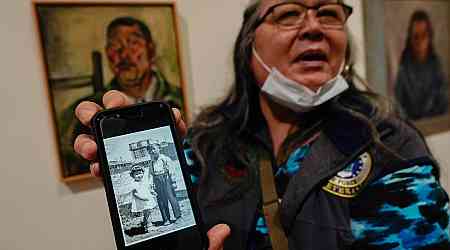I am an active member of The Church of Jesus Christ of Latter-day Saints who has worn the garment for the past 15 years. I am also a millennial woman who recognizes and has experienced the diverse needs of womanhood, and I would like to see more opportunities for women’s voices to be heard and represented in the church.
As I have followed the conversation surrounding garments, I’ve tried to step back and analyze what is driving the deeply held, valid beliefs of multiple sides. One thought I keep coming back to is that we are dealing with a symbol, and symbols are by nature layered, unique and complex; just as unique and complex as the people who interpret them.
When we consider the temple garment, it’s important to consider the many layers of this symbol. There is a doctrinal definition of what the garment represents — the Atonement of Christ. There are also historical, social and individual layers of symbolism for the garment. It’s the convergence of these layers and weight given to them by each individual that ultimately creates the cumulative symbolic meaning for any one person.
The social symbolism of garments weighs heavily on millennials and younger members. This symbolism originated in part in our formative years when modesty was pushed via specific guidelines in the “For the Strength of Youth” pamphlets, with garments held up as the gold standard. During this crucial time, millennials experienced intense social scrutiny over clothing standards rigidly tied to our personal worth and testimonies. Many devout young women sadly also internalized the message, “My body is bad, and I have to cover it.” Modesty was such a focus during these developmental years, with garments so intricately wrapped up in the dialogue, that some symbolism of garments was defined before most of us even entered the temple to learn differently. Garments have accumulated several messages through the years, and as a result, today symbolize control, shame and social judgment to many. Millennials are not only trying to rewrite this traumatizing messaging, but based on sad personal experience, they also are averse to any philosophy that ties judging a person’s worth to their appearance.
In this April’s General Conference, Relief Society counselor J. Anette Dennis defined the doctrinal symbolism of the garment in the most specific and complete way I have ever heard described outside of the temple. But talking openly about this information is new, and while we are grateful to assimilate it, one cannot simply erase the complex connotations decades of institutional and social programming have attributed to the sacred garment. Many millennial women crave a nuanced approach to the garment that allows us bodily autonomy and a less hyper-critical, appearance-based culture. We want our testimonies to be defined by our hearts, not our hemlines.
Other challenges women face with the garment include the physical health-related challenges. These are almost too diverse to list here, ranging from urinary tract and yeast infections to period, pregnancy, afterbirth, nursing and menopause needs, to sensory, skin and allergy needs, and everything in between. It is almost asking too much of one article of clothing to comprehensively serve a being as complex and extraordinary as a woman. If we are to ask such a thing, we must do so respectfully and reasonably; each ask contributes to a woman’s personal relationship with the garment as a symbol.
A woman’s relationship with her body is personal, tender and always evolving. Yet, when we consider the courage and humility with which she meets life’s varied demands, it is hard to find a better living example of our temple covenants such as the laws of sacrifice, obedience and consecration, than a woman devoting her body and soul to the creation and well-being of others. Her many sacrifices and how they exemplify commitment to covenants throughout life should be considered respectfully when discussing how clothing, including the garment, meets her needs.
function onSignUp() { const token = grecaptcha.getResponse(); if (!token) { alert("Please verify the reCAPTCHA!"); } else { axios .post( "https://8c0ug47jei.execute-api.us-east-1.amazonaws.com/dev/newsletter/checkCaptcha", { token, env: "PROD", } ) .then(({ data: { message } }) => { console.log(message); if (message === "Human


























